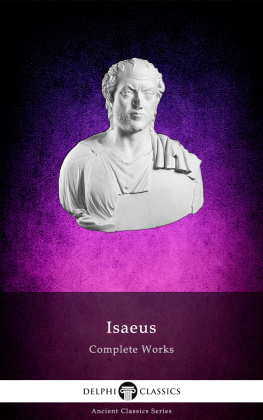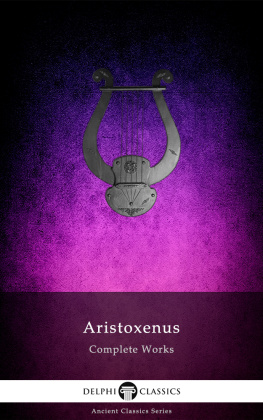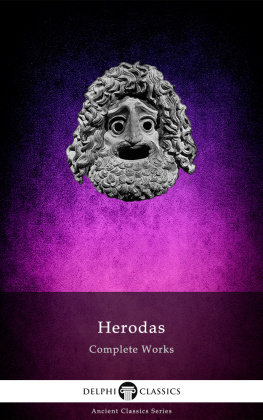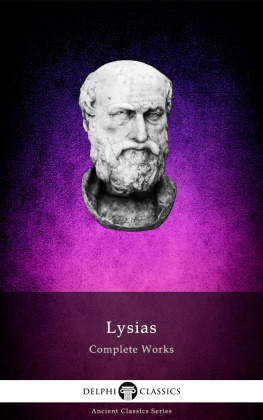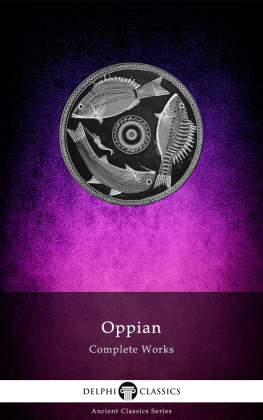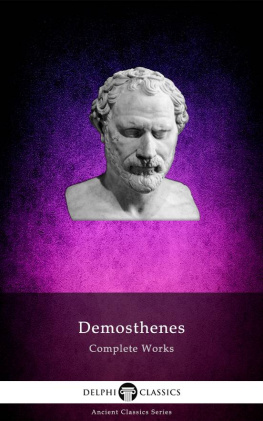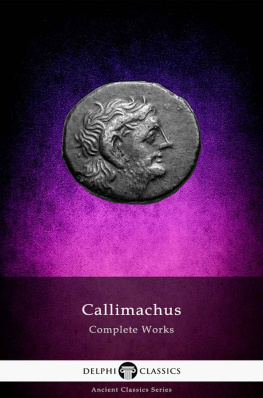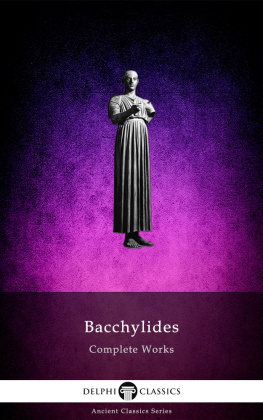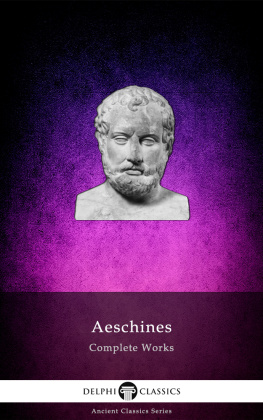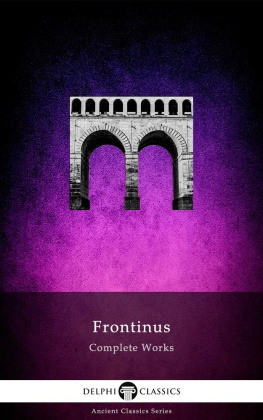The Complete Works of
ISAEUS
(fl. early 4th century BC)

Contents

Delphi Classics 2022
Version 1

Browse Ancient Classics







The Complete Works of
ISAEUS

By Delphi Classics, 2022
COPYRIGHT
Complete Works of Isaeus

First published in the United Kingdom in 2022 by Delphi Classics.
Delphi Classics, 2022.
All rights reserved. No part of this publication may be reproduced, stored in a retrieval system, or transmitted, in any form or by any means, without the prior permission in writing of the publisher, nor be otherwise circulated in any form other than that in which it is published.
Front cover image: bust of an unknown sophist, excavated in Sebasteion, Aphrodisias, Caria, in 1979.
ISBN: 978 1 80170 091 7
Delphi Classics
is an imprint of
Delphi Publishing Ltd
Hastings, East Sussex
United Kingdom
Contact: sales@delphiclassics.com

www.delphiclassics.com
The Translation

Chalcis, the chief town of the island of Euboea, Greece Isaeus, a son of Diagoras, was born at Chalcis.
The Speeches

Translated by E. S. Forster, Loeb Classical Library, 1927
Flourishing in early 4 th century BC, Isaeus was one of the ten Attic orators according to the Alexandrian canon. We know almost nothing about his life. He was a student of Isocrates in Athens and is believed to have taught Demosthenes in later years, while working as a metic logographer (speechwriter). Only eleven of his speeches survive, with fragments of a twelfth. They are mostly concerned with issues of inheritance, with one dealing with the subject of civil rights.
It is believed that he lived during the period between the Peloponnesian War and the accession of Philip II of Macedon, namely between 420 and 348 BC. He was a son of Diagoras, and was born at Chalcis in Euboea, though some sources list Athens as his birthplace, likely because he came there at an early age and spent the greater part of his life in that city. He was instructed in oratory by Lysias and Isocrates, two other important writers that would be later included in the canonical list of ten Attic orators. After his years of tutelage, Isaeus was engaged in writing judicial orations for others and went on to establish a rhetorical school in Athens, when Demosthenes would have attended as his pupil. The Suda states that Isaeus instructed him free of charge, though Plutarch relates that he received 10,000 drachmas. Some accounts suggest that Isaeus composed for Demosthenes the speeches against his guardians, or at least assisted him in the composition. All particulars about his life are unknown and were so even in the time of the historian Dionysius of Halicarnassus (c. 60 - c. 7 BC), since Hermippus, who had written an account of the disciples of Isocrates, failed to make any mention of Isaeus.
The extant orations are all on subjects connected with disputed inheritances; and Isaeus appears to have been particularly well acquainted with the laws relating to inheritance. Ten of these orations had been known ever since the revival of letters in the Renaissance and were printed in the collections of Greek orators; but the eleventh, On Menecles legacy ( ), was first published in 1785 from a Florentine manuscript by Tyrwhitt, and later by Orelli in 1814. Also, in 1815 Mai discovered and published the greater half of Isaeus oration On Cleonymus legacy ( ).
Although Isaeus orations were placed fifth in the Alexandrian canon, no grammarians are known to have written commentaries on him, except for Didymus of Alexandria. His oratory resembles in many points that of his teacher, Lysias: the style of both is pure, clear and concise; but while Lysias is simple and graceful, Isaeus clearly strives for a higher degree of polish and refinement, without injuring the powerful and impressive character of his work. The same spirit is visible in the manner in which he handles his subjects, especially in their skillful division, and in the stylistic manner in which he interweaves his arguments with various parts of the exposition. It was mainly owing to this technique that he was envied and censured by his contemporaries, as if he had tried to deceive and distract his audience. Although Isaeus shares with Lysias the merits of a pure Attic and lucidity of style, Isaeus is more aggressive and more flexible in his presentation; which went on to influence the great Demosthenes.

Bust of Isocrates, Pushkin Museum, based on a bust formerly in Villa Albani, Rome
CONTENTS

Bust of Demosthenes, Louvre, Paris
On the Estate of Cleonymus
ARGUMENT.

C LEONYMUS HAVING DIED , his nephews claim his estate as the natural heirs. They admit that the will in favor of Pherenicus, Simon, and Poseidippus, and produced by these persons, was the genuine will of Cleonymus, and was deposited by Cleonymus with the magistrates at a time when he was angry with their guardian Deinias; they allege, however, that he subsequently tried to annul the will, and after having sent for the police-magistrate, died suddenly. They further allege that Polyarchus, their grandfather and Cleonymuss father, instructed the latter, if anything should happen to him, to leave his property to them. The question at issue is a decision between the conflicting claims of the two parties, one basing their claim on the original will, the other relying on the last acts of Cleonymus, and alleging that he sent for the magistrate in order to annul the will.
Next page
